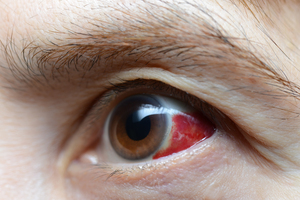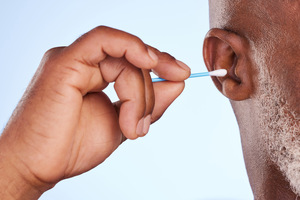Key points
- Stress can trigger skin conditions like rashes and hives, causing itching, burning, or tingling sensations.
- Stress rashes often appear as raised red bumps or hives, and can be exacerbated by underlying skin conditions or allergies.
- Treatment for stress rashes can include home remedies, stress management techniques, and medical interventions if necessary.
- Preventing stress rashes involves adopting healthy habits, establishing a consistent skincare routine, and managing stress levels effectively.

Stress can be a trigger for a variety of skin conditions, such as stress rashes and hives, which can show up as uncomfortable and bothersome irritations. These rashes often appear on visible areas like the face, chest, neck or arms, leading to feelings of distress. If you're experiencing stress rashes, you might notice symptoms such as itching, burning or tingling sensations, which can make anxiety even harder to manage. It’s important to understand how stress impacts skin health to effectively manage and treat these conditions, helping you feel both emotionally and physically better.
What does a stress rash look like?
Stress rashes typically manifest as raised red bumps known as hives, which can vary in size and shape. MedlinePlus explains that these hives may appear suddenly and can be localized to specific areas or spread across larger sections of the skin. Understanding the visual characteristics of a stress rash can help individuals identify and address their symptoms more effectively.
In addition to their prominent red coloration and raised texture, stress rashes often come with uncomfortable sensations. According to MedlinePlus, many individuals report experiencing intense itching, which can lead to scratching and further irritation of the skin. Others may describe a burning or tingling feeling in the affected areas, adding to the overall discomfort. Recognizing these symptoms is crucial, as they not only indicate the presence of a stress rash but also highlight the need for appropriate management strategies to alleviate both the physical and emotional aspects of stress-related skin conditions.
What causes a stress rash?
While stress itself can be a primary trigger, individuals with underlying skin conditions such as eczema, psoriasis or rosacea are often more susceptible to developing rashes when faced with emotional or physical stressors. MedlinePlus explains that these pre-existing conditions can exacerbate the skin's sensitivity and response, leading to flare-ups that manifest as raised red bumps or hives. Additionally, those with allergies may find that stress intensifies their skin reactions, making it crucial to address both the emotional and physical aspects of their health.
Beyond stress and pre-existing skin conditions, hives can also be triggered by a variety of other factors says MedlinePlus. Viral infections and illnesses can provoke immune responses that result in skin irritations, while environmental triggers such as pollen, pet dander or certain foods may contribute to the development of hives. Understanding these multifaceted causes is vital for individuals experiencing stress rashes, as it allows them to pinpoint potential triggers and seek appropriate interventions to alleviate their symptoms and improve their overall skin health.
How to treat stress hives
Treating stress hives effectively involves a combination of home remedies, stress management techniques and, when necessary, medical interventions. Each approach can help alleviate symptoms and address the underlying causes of stress-related skin conditions. Here are several strategies to consider for treating a stress rash:
Natural home remedies for a stress rash
According to MedlinePlus, home remedies can provide immediate relief for stress hives. Applying cool compresses to the affected areas can soothe itching and reduce inflammation. Oatmeal baths are another popular option, as they help to calm irritated skin. Additionally, using aloe vera gel or coconut oil can moisturize the skin and promote healing, while essential oils like lavender may offer calming effects.
Managing your stress
Effective stress management is crucial to preventing and treating stress rashes according to MedlinePlus. Techniques such as mindfulness meditation, deep breathing exercises and yoga can help reduce overall stress levels. Regular physical activity is also beneficial, as it releases endorphins that improve mood and alleviate anxiety. Establishing a balanced routine with adequate sleep and healthy nutrition can further support emotional well-being.
Medical treatments for a stress rash
In cases where home remedies and stress management techniques are insufficient, medical treatments may be necessary. MedlinePlus notes that over-the-counter antihistamines can help relieve itching and reduce hives. For more severe cases, a healthcare provider may prescribe topical corticosteroids or other medications to manage inflammation. Consulting with a dermatologist can provide tailored treatment options based on the individual's specific needs and skin type.
How to prevent a stress rash
By adopting healthy habits and lifestyle changes, individuals can significantly reduce the likelihood of experiencing stress-related skin irritations, notes MedlinePlus. One effective prevention method is to establish a consistent skincare routine that includes gentle, hydrating products to keep the skin barrier intact. Staying well-hydrated and maintaining a balanced diet rich in vitamins and antioxidants can also support skin health. Additionally, incorporating relaxation techniques such as meditation, yoga or regular exercise can help manage stress levels effectively.
Urgent care near me
If you're experiencing a stress rash or any other urgent health concern, don't wait to seek the care you need. Solv makes it easy to find urgent care facilities near you, allowing you to get prompt attention from healthcare professionals.
FAQs
What are the symptoms of a stress rash?
Symptoms of a stress rash include raised red bumps known as hives, which can vary in size and shape. These rashes can appear suddenly and can be localized to specific areas or spread across larger sections of the skin. Individuals may also experience uncomfortable sensations such as intense itching, burning, or tingling in the affected areas.
What are the causes of a stress rash?
Stress can be a primary trigger for stress rashes, especially in individuals with pre-existing skin conditions like eczema, psoriasis, or rosacea. These conditions can make the skin more sensitive, leading to flare-ups when faced with emotional or physical stressors. Other triggers can include viral infections, environmental factors like pollen or pet dander, and certain foods.
How can a stress rash be treated?
Treatment for stress rashes can involve a combination of home remedies, stress management techniques, and medical interventions. Home remedies may include applying cool compresses, oatmeal baths, or aloe vera gel. Stress management techniques such as mindfulness meditation, deep breathing exercises, and regular physical activity can also be beneficial. In severe cases, medical treatments like over-the-counter antihistamines or prescribed topical corticosteroids may be necessary.
How can stress rashes be prevented?
Prevention of stress rashes can involve adopting healthy habits and lifestyle changes. Establishing a consistent skincare routine, staying well-hydrated, and maintaining a balanced diet can support skin health. Incorporating relaxation techniques such as meditation, yoga, or regular exercise can also help manage stress levels effectively.
What should I do if I'm experiencing a stress rash?
If you're experiencing a stress rash, you should seek medical attention. Over-the-counter antihistamines can help relieve itching and reduce hives, but for more severe cases, a healthcare provider may prescribe other medications to manage inflammation. It's recommended to consult with a dermatologist for tailored treatment options based on your specific needs and skin type.









